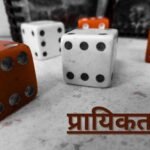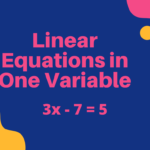Q 1) What is probability?
Ans. – Probability is the possibility of the occurrence of any event. When an event occurs, the chances of favorable outcomes are the value of probability.

Q 2) What is the formula of probability?
Ans. – Probability of an event = Number of favorable outcomes/total number of outcomes.
For event A, we can write the formula,
Probability of event A, P(A) = the number of favorable outcomes of event A/total number of outcomes of event A.
Q 3) What is an event?
Ans. – An event is the collection of possible outcomes of an experiment. For example – After throwing a die getting any number is an event.
Q 4) What is the relation between ‘probability’ and ‘not probability’?
Ans. – ‘Probability’ of an event is shown as P(E) and the ‘not probability’ of an event is shown as P(E’).
Relation between P(E) and P(E’),
P(E) + P(E’) = 1
Or P(E) = 1 – P(E’) and P(E’) = 1 – P(E)
Q 5) What are the uses of probability?
Ans. – Probability is used in many fields because of its importance. It is used in the fields of science, commerce, weather like physical sciences, biological sciences, medical sciences, commerce and economics, and weather forecasting.
Q 6) What is the minimum and maximum value of probability?
Ans. – The minimum value of probability can be 0 and the maximum value of probability can be 1. It means the value of probability for an event lies between 0 and 1 or we can also write, 0 ≤ P(E) ≤ 1.
Q 7) What is the experiment in probability?
Ans. – When we perform a task to find the probability it is called an experiment. For example – tossing a coin, throwing a die, taking out an object from a box, etc., are the experiments.
Q 8) What is an impossible event?
Ans. – If the probability of an event is 0 then that is called an Impossible event. The occurrence of this type of event is impossible.
Q 9) What is a certain event?
Ans. – If the probability of an event is 1 then the event is called a certain event. Certain event is also called Sure event.
Q 10) Find the probability of getting a tail when a coin is tossed one time.
Ans. – In this question, a coin is tossed one time so there will be two possible outcomes head or tail. Let A be the event of getting a tail.
For a coin that is tossed one time, the outcome of getting a tail is 1. It means the favorable outcomes of event A is 1 and the total possible outcomes are 2.
Therefore,
Probability of event A, P(A) = Number of favorable outcomes/total number of possible outcomes
P(A) = ½

















































































































































